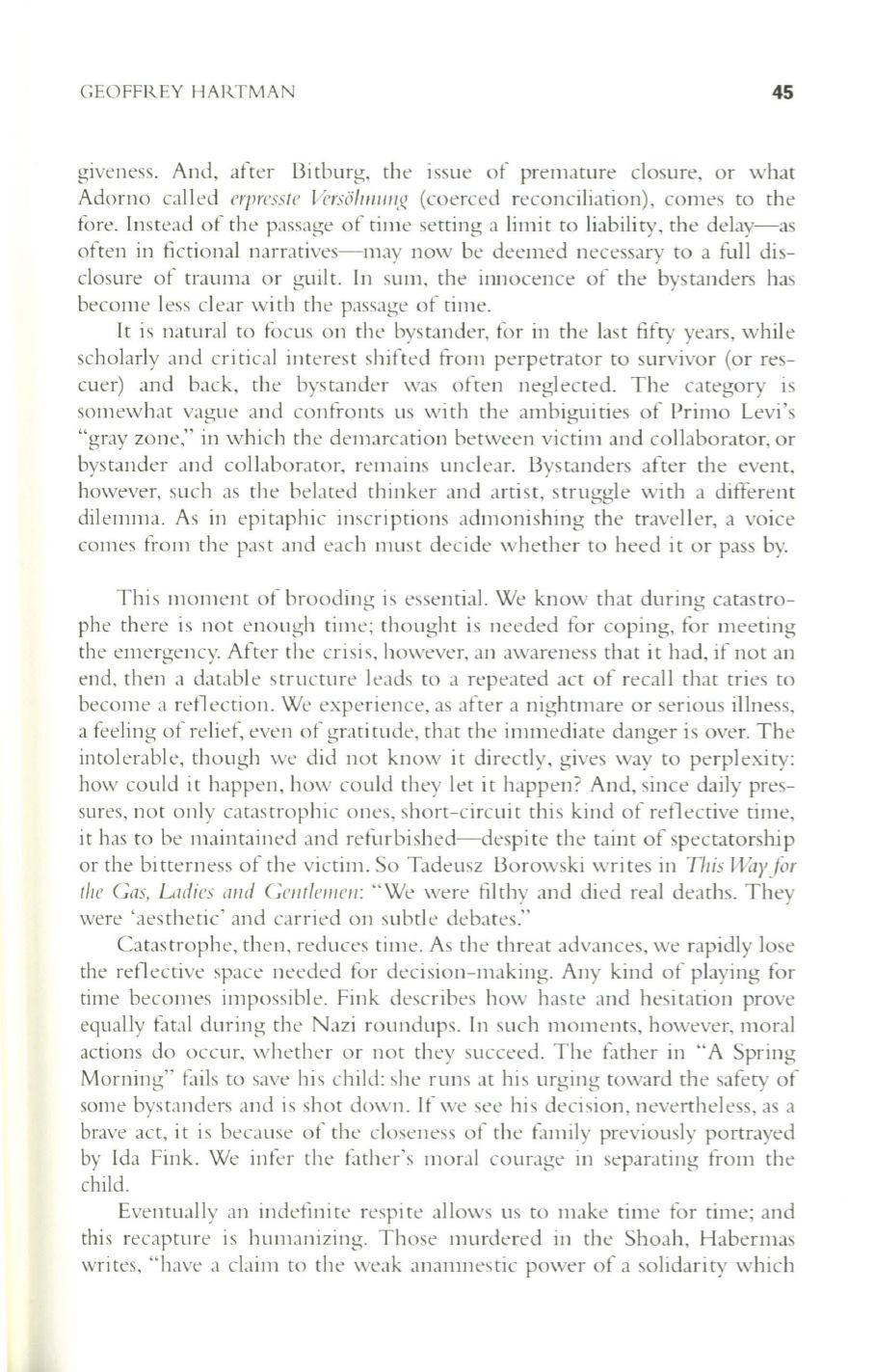
GEOFFREY HARTMAN
45
giveness. And, after L3itburg, the issue of premature closure, or what
Adorno called
erprcssle Vcrsii/I11I1I1}!
(coerced reconciliation), comes to the
fore. Inste3d of the p3ss3ge of time setting 3 limit to li3bility, the delay-as
often in fictional narratives-Illay now be deemed necessary to a full dis–
closure of trauma or guilt. In sum, the innocence of the bystanders has
becollle less clear with the passage of time.
It is natural to focus on the bystander, for in the last flfty years, whi le
scholarly and critical interest shifted from perpetrator to survivor (or res–
cuer) and back, the bystander was often neglected. The category is
sOlllewhat vague and confronts us with the ambiguities of Primo Levi's
"gray zone," in which the demarcation between victim and collaborator, or
bystander and collaborator, relllains unclear. Bystanders after the event,
however, such as the belated thinker and artist, struggle with a different
dilemma. As in epitaphic inscriptions admonishing the traveller, a voice
comes from the pas t and each mus t decide whether to heed it or pass by.
This Illoment of brooding is essential. We know that during catastro–
phe there is not enough time; thought is needed for coping, for meeting
the emergency. After the crisis, however, an awareness that it had, if not an
end, then a datable structure leads
to
a repeated act of recall that tries to
become a reflection. We experience, as after a nightmare or serious illness,
a feeling of relief, even of gratitude, that the immediate danger is over. The
intolerable, though we did not know it directly, gives way to perplexity:
how could it happen, how could they let it happen' And, since daily pres–
sures, not only catastrophic ones, short-circuit this kind of reflective time,
it has to be maintained and refurbished-despite the taint of spectatorship
or the bi tterness of the victim. So Tadeusz L3orowski writes in
This
WayIor
the Cas,
Ladies Illld G£'III/eIl1£'1l:
"We were fil thy and died real deaths. They
were 'aesthetic' and carried on subtle debates."
Catastrophe, then, reduces tillle. As the threat advances, we rapidly lose
the reflective space needed for decision-Illaking. Any kind of playing for
time becomes impossible. Fink describes how haste and hesitation prove
equally fatal during the Nazi roundups. In such moments, however, Illoral
actions do occur, whether or not they succeed. The father in "A Spring
Morning" fails to save his child: she runs at his urging toward the safety of
some bystanders and is shot down. If we see his decision, nevertheless, as a
brave act, it is because of the closeness of the family previously portrayed
by Ida Fink. We infer the father's moral courage in separating fro
III
the
child.
Eventually an indefinite respite allows us to make time for time; and
this recapture is humanizing. Those murdered in the Shoah, Habermas
writes, "have a claim to the weak anamnestic power of a solidarity which


